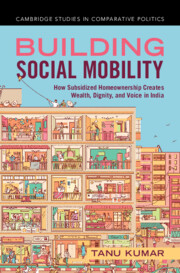Book contents
- Frontmatter
- Dedication
- Contents
- Tables
- Figures
- Acknowledgments
- 1 Building Social Mobility
- 2 Policies to Improve Housing Quality
- 3 Wealth
- 4 Dignity
- 5 Voice
- 6 Implications for Effective Policy
- Appendix A Supplemental Information, Chapter 2
- Appendix B Supplemental Information, Chapter 3
- Appendix C Supplemental Information, Chapter 4
- Appendix D Supplemental Information, Chapter 5
- References
- Index
- Cambridge Studies in Comparative Politics
- References
References
Published online by Cambridge University Press: 15 September 2025
- Frontmatter
- Dedication
- Contents
- Tables
- Figures
- Acknowledgments
- 1 Building Social Mobility
- 2 Policies to Improve Housing Quality
- 3 Wealth
- 4 Dignity
- 5 Voice
- 6 Implications for Effective Policy
- Appendix A Supplemental Information, Chapter 2
- Appendix B Supplemental Information, Chapter 3
- Appendix C Supplemental Information, Chapter 4
- Appendix D Supplemental Information, Chapter 5
- References
- Index
- Cambridge Studies in Comparative Politics
- References
Summary

Information
- Type
- Chapter
- Information
- Building Social MobilityHow Subsidized Homeownership Creates Wealth, Dignity, and Voice in India, pp. 199 - 212Publisher: Cambridge University PressPrint publication year: 2025
References
Accessibility standard: Inaccessible, or known limited accessibility
Content Navigation
Allows you to navigate directly to chapters, sections, or non‐text items through a linked table of contents, reducing the need for extensive scrolling.
Provides an interactive index, letting you go straight to where a term or subject appears in the text without manual searching.
